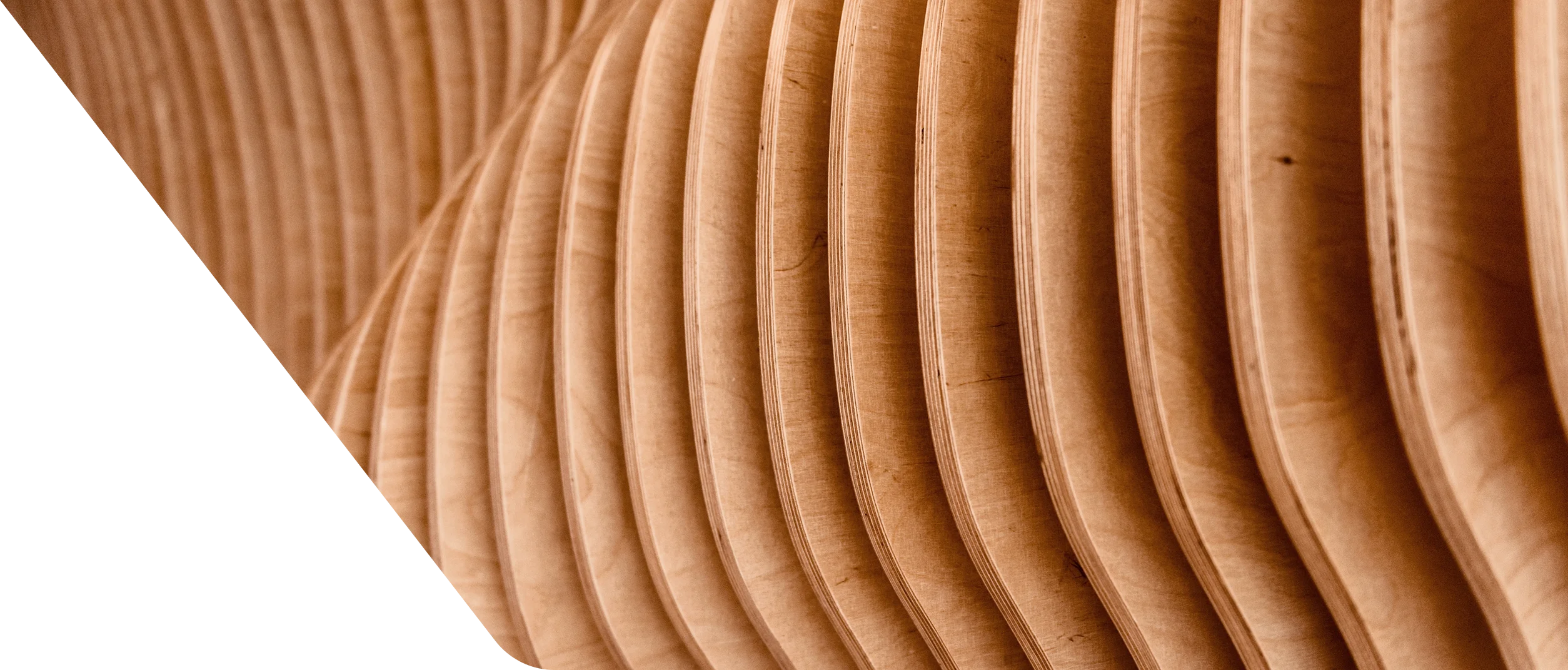ANSI/AWI 0620-2024 - Finish Carpentry/Installation
3.3 Structural
a) Structural performance, in relation to this standard, refers to properties that provide and maintain the integrity of the Product as installed.
3.3.1 Casework
a) When installing a manufacturer/supplier’s casework, installer shall obtain, review, and comply with all of the applicable manufacturer/supplier’s documented instructions for installation. Installer shall not install a manufacturer/supplier’s casework in any manner prohibited by the manufacturer in its instructions.
3.3.2 Wall and Ceiling Surface Paneling
a) Fastening shall be concealed wherever possible and should permit movement of panels resulting from changes in temperature and/or relative .
b) Sufficient fastening is required to prevent panels from becoming dislodged.
c) For wall panels installed at 2743 mm [108”] or more above finished floor, and at all ceiling panels regardless of height, mechanical fasteners are required. Exposed fasteners shall be kept to a minimum.
d) Reveal strips set into panel s shall be permitted to float without adhesive or fasteners to accommodate expansion and contraction resulting from changes in temperature and/or relative humidity.
e) In s, the minimum reveal gap between panels shall be calculated as length of panel times 0.004 for all s.
f) Unless otherwise indicated, s designed to be ed shall be 3.2 mm [.125”] +0 mm/- 1.6 mm [+0”/-.063”] in width to permit caulk penetration.
g) Sealants and adhesives shall be applied per manufacturer/supplier’s documented instructions.
h) Product shall be installed over suitable substrates based on the manufacturer/ supplier’s documented instructions.
i) Expansion joints shall be provided per manufacturer/supplier’s documented instructions.
j) Inside corners of cutouts shall be radiused to prevent ting.
3.3.3 Catalog and Made-to-Order Mouldings (Standing and Running Trim)
a) Outside miters shall be reinforced with mechanical fasteners.
b) Large, one-piece, or multi-component mouldings shall be installed with back blocking as needed to maintain aesthetic tolerances.
c) Running joints shall be either mitered or butted. If butted, joint shall be reinforced with mechanical fasteners.
d) Non-climate-controlled applications shall use corrosion-resistant fasteners.
3.3.4 Passage Doors (Within Integrated Door Systems)
a) Doors shall operate without binding after installation.
b) Utility or structural strength of doors shall not be impaired in fitting them to the opening, installing hardware, and preparing for glazing, s, trim, or other detailing.
a) Fitting for width requires door to be trimmed equally on both sides.
b) When fitting for height, trimming top or bottom rails shall not exceed manufacturer/suppliers instructions.
a) For field-fitted doors, clearance between the door and frame components shall be a maximum of 3.2 mm [.125”] on the hinge and lock sides, the top of the door, and between the meeting edges of doors in pairs.
b) Bottom clearance shall be a minimum of 6.4 mm [.250”] and a maximum of 15.9 mm [.625”] measured from the bottom of the door to the highest point of the finished floor or threshold that the door swings over.
a) Hinges shall be installed per manufacturer/supplier’s documented instructions for location and weight of door.
a) Cutouts shall be sealed and protected from moisture entering the door core.
b) At decorative laminate, cutouts shall have a minimum radius of 6.4 mm [.250”] at inside corners.
a) Installation shall be in conformance with the manufacturer/supplier supplied instructions and in accordance with NFPA 80 (latest edition). Removal of labels is prohibited.
b) Field modification shall be in accordance with NFPA 80 (latest edition).
3.3.5 Countertops
a) Installer shall confirm that support for countertops meets the requirements shown in . If not, the installer shall request direction from manufacturer/supplier.
b) Product shall be installed per manufacturer/supplier’s documented instructions.
c) Front and leading edges of top shall withstand a 34 kg [75 lb.] force at any point.
d) Water-resistant caulk shall be used at square s of es and ends, leaving a uniform bead not to exceed 3.2 mm [.125”] in width.
a) Sink cutouts shall not fall within 457 mm [18”] of discretionary installer joints.
b) Cutouts shall have a minimum radius of 6.4 mm [.250”] at inside corners.
c) Cutouts for sinks in wood-based substrates shall be sealed with at least one coat of color-tinted (for verification) water-resistant sealer or caulk.
a) Assembly Type 1 – Wall Mount Splash (See Figure 11): Splash components shall be adhered to the wall, butt joined to the countertop, and sealed with water resistant caulk between the countertop and splash edge so as to leave a uniform bead not to exceed 3.2 mm [.125”] in width along the joint.
b) Assembly Type 2 – Countertop Mount Splash (See Figure 12): Splash components shall be butt joined, securely attached with mechanical fasteners to the countertop, and sealed with water-resistant caulk between the countertop and splash edge so as to leave a uniform bead not to exceed 3.2 mm [.125”] in width along the joint. Exposed top and ends shall be scribed to the wall. Unsupported span shall not exceed 12.7 mm [.500”] at ends and back walls.
a) Sealants and adhesives shall conform to the sheet material manufacturer/ supplier’s documented instructions.
b) Expansion joints shall be provided per sheet material manufacturer/supplier’s documented instructions.
c) Cutouts and inside corners shall be radiused in accordance with sheet material manufacturer’s recommendations.
d) At “L” and “U” configured corners, inside corners shall be smooth and rounded with seams offset per sheet material manufacturer’s recommendations.
e) Hard seams shall be watertight, gap free, and inconspicuous.
f) Separate back splashes shall be securely attached to the wall and butt joined to the countertop with water-resistant clear (or color-compatible) caulk or adhesive so as to leave a uniform bead not to exceed 3.2 mm [.125”] in width along the joint.
a) Hard seams shall be watertight and gap free.
b) Separate back splashes shall be securely attached to the wall and butt joined to the countertop with water-resistant clear (or color-compatible) caulk or adhesive so as to leave a uniform bead not to exceed 3.2 mm [.125”] in width along the joint.
c) Sinks shall be installed per manufacturer/supplier’s documented instructions to produce a secure and sealed joint.
a) Hard seams shall be watertight and gap free.
b) Cutouts and inside corners shall be radiused in accordance with slab distributor’s recommendations.
c) At “L” and “U” configured corners, inside corners shall be smooth and rounded with seams offset per slab distributor’s recommendations.
d) Separate back splashes shall be securely attached to the wall and butt joined to the countertop with water-resistant clear (or color-compatible) caulk or adhesive so as to leave a uniform bead not to exceed 3.2 mm [.125”] in width along the joint.
e) Sinks shall be installed per manufacturer/supplier’s documented instructions to produce a secure and sealed joint.
a) Separate back splashes shall be securely attached to the wall and butt joined to the countertop.
b) Sink cutouts shall not fall within 457 mm [18”] of discretionary installer joints.
c) Cutouts for sinks in wood-based substrates shall be sealed with at least one coat of color-tinted (for verification) water-resistant sealer or caulk.
a) Separate back splashes shall be securely attached to the wall and butt joined to the countertop with water-resistant clear (or color-compatible) caulk or adhesive so as to leave a uniform bead not to exceed 3.2 mm [.125”] in width along the joint.
b) Sinks shall be installed per manufacturer/supplier’s documented instructions to produce a secure and sealed joint.



